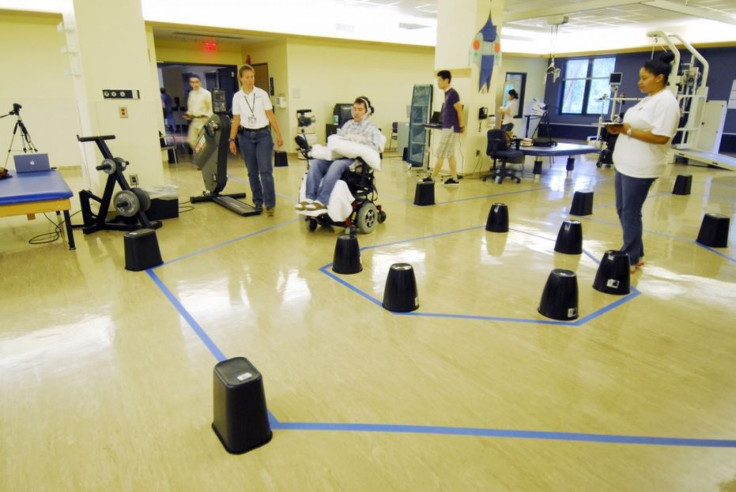Roll The Tongue And Move: Tongue-Piercing With A Magnet Allows People With Physical Disabilities To Control Their Wheelchair [VIDEO]

A team of researchers announced on Wednesday that they have developed a tongue-controlled technology to help paralyzed people control their wheelchairs at speeds that are significantly faster than those recorded in existing sip-and-puff wheelchairs.
The new technology, dubbed the Tongue Drive System, is controlled by the position of the user’s tongue, which is pierced with a tiny magnet that turns the organ into something like a joystick to drive the wheelchair, or even move computer cursors. Paralyzed patients can control the chair’s speed by tapping the tongue against the cheek, quickly or slowly.
“The Tongue Drive System is a novel technology that empowers people with disability to achieve maximum independence at home and in the community by enabling them to drive a power wheelchair and control their environment in a smoother and more intuitive way,” Elliot Roth of the Feinberg School of Medicine at Northwestern University in Chicago, said in a statement.
According to the scientists, the small magnetic barbell creates a magnetic field in the mouth, which is altered when users flick their tongues. The change is picked up by small sensors on a headset, and relayed wirelessly to a smartphone, computer or iPod, allowing the software to translate the signals and send them to the wheelchair or a computer.

The scientists believe that the technology holds promise for patients who have lost the use of their arms and legs, a condition known as tetraplegia or quadriplegia. A paper related to the study was published in the journal Science Translational Medicine on Wednesday.
The advantage of the new technology “is more than just a wheelchair control,” Jason Disanto, 39, who has been paralyzed from the neck down since a 2009 diving accident, told Reuters. “It's an independence system.”
The research team tested the technology with subjects that included both able-bodied people and those with tetraplegia. The researchers compared how able-bodied subjects could execute commands either with the Tongue Drive System or with a keypad and mouse, and found that the performance gap between the two methods narrowed throughout the trial.
As for the subjects with tetraplegia, they used the new system three times faster than their performance with the sip-and-puff system, while maintaining the same level of accuracy.
It was Maysam Ghovanloo of the Georgia Institute of Technology in Atlanta and his colleagues, who began developing the tongue-controlled system about five years ago. An early version of the system used magnets glued to the tongue, but they fell off after a few hours. Anne Laumann, a professor of dermatology at Feinberg, had the alternative idea to use piercing to secure the magnets in place.
The experiments were repeated over five weeks for the able-bodied test group, and over six weeks for the tetraplegic group, with all of the subjects being able to complete the trial. The tetraplegic group was using the system just one day each week, but their improvement in performance was dramatic, according to the researchers.
The Tongue Drive System isn’t quite ready for commercialization, but Ghovanloo’s startup company, Bionic Sciences, is working with Georgia Tech to move the technology forward.
Check out the video here:
© Copyright IBTimes 2025. All rights reserved.





















